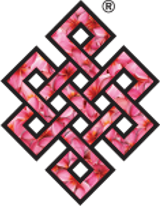Clary Sage (Reconstitution)
Description
Salvia sclarea, clary or clary sage is a biennial or short-lived herbaceous perennial in the genus Salvia. It is native to the northern Mediterranean, along with some areas in north Africa and Central Asia. The plant has a lengthy history as a medicinal herb and is currently grown for its essential oil.
S. sclarea reaches 3 to 4 ft (0.91 to 1.22 m) in height, with thick square stems that are covered in hair. The leaves are approximately 1 ft (0.30 m) long at the base, 0.5 ft (0.15 m) long higher on the plant. The upper leaf surface is rugose and covered with glandular hair. The flowers are in verticils with 2-6 flowers in each verticil and are held in large colorful bracts. That range in color from pale mauve to lilac or white to pink with a pink mark on the edge. The lilac or pale blue corolla is approximately 1 in (2.5 cm) with the lips held wide open.
Clary seeds have a mucilaginous coat,which is why some old herbals recommended placing a seed into the eye of someone with a foreign object in it so that it could adhere to the object and make it easy to remove. This practice is noted by Nicholas Culpeper in his Complete Herbal (1653) who referred to the plant as "clear-eye".
The distilled essential oil is used widely in perfumes and as a muscatel flavoring for vermouths wines and liqueurs. It is also used in aromatherapy for relieving anxiety and fear, menstrual-related problems such as PMS and cramping and helping with insomnia. It is used as fragrance component and fixative in soaps, detergents, cosmetics and perfumes. The oil is used extensively by the food and drink industry. Especially in the production of wines with a muscatel flavor. The young tops of Clary were used in soups and as pot herbs. It gives a new lift to omelets and was used to flavor jellies. The leaves were chopped into salads. Culpeper recommended a 17th century sage dish where the fresh leaves were first dipped in a batter of flour, eggs and a little milk fried in butter and served as a side dish.
The flowers have an aromatic flavor and make a lovely contrast in salads. All sage flowers are edible after removing all greenery and stems.
The main constituents of the oil are Linalyl Acetate , Linalool and Germacrene. Clary Sage Oil is one of the most important in a perfumers pallete. Excellent blending properties and forms good accords with Citrus and Herbal notes. And at the same time has very useful fixative properties.

